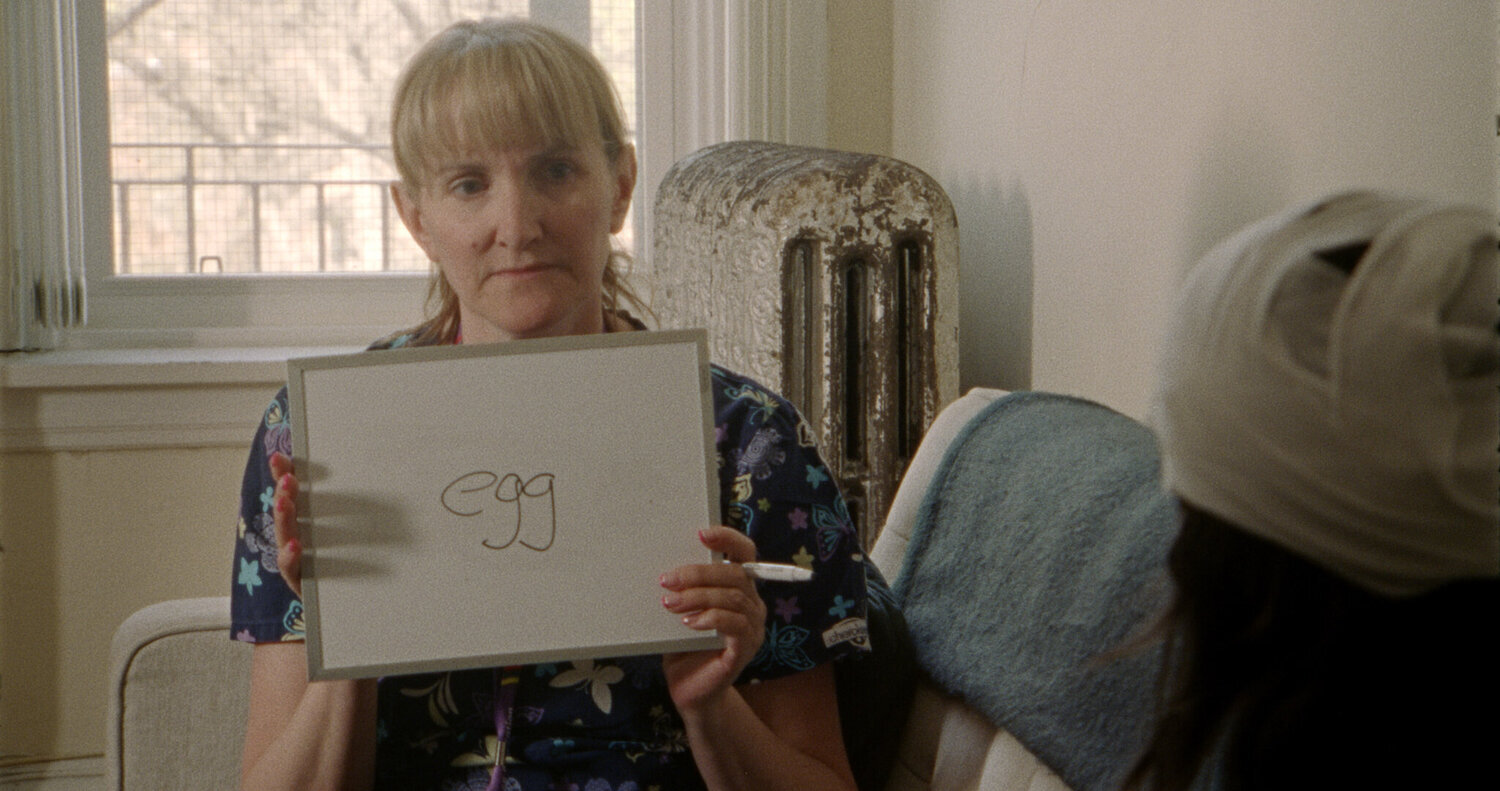Milos Mitrovic & Fabian Velasco
Tapeworm , Milos Mitrovic & Fabian Velasco (2019)
Milos Mitrovic & Fabian Velasco are Winnipeg-based screenwriters, editors, producers, and film directors. Under the Neon Lights, written by Mitrovic and Velasco and directed by Velasco, premiered at Toronto After Dark, as did their short film The Champ, featuring Mitrovic as a washed-up boxer; Imitations, another short, screened at Vancouver, TIFF - Toronto International Film Festival, and Fantastic Fest. Mitrovic & Velasco's debut feature Tapeworm premiered at Vancouver, Tallinn Black Nights, and Slamdance.
In an exclusive interview with Filmatique, Milos Mitrovic & Fabian Velasco discuss casting friends, the grunge of 16mm, inspiration in Solondz and Alverson, and their next projects.
//
FILMATIQUE: Tapeworm weaves a loosely interconnected portrait of contemporary Winnipeg, following a diverse cast of characters as they go about their mundane existences. Could you reflect on your inspiration for this story? How did the project come about?
MILOS MITROVIC: We have been making short films that were more surreal in nature for a while now, and when we decided to make our feature we wanted to take a more realist filmmaking approach to it. Winnipeg is quite isolated and we kind of wanted to capture that on film.
FABIAN VELASCO: As for the characters I've always been more interested in those who don't succeed but keep trying anyway. In this case even though none of them necessarily have a traditional goal or ambition, living their lives every day is already trying enough. So we wanted to explore those kinds of people.
FLMTQ: The actors in Tapeworm are mostly Winnipeg locals, some with acting experience, some without. Can you discuss your casting process? Were any actors present from the conception of the film, to what extent did you collaborate with them on the script?
MM: Before we wrote the script we knew we wanted to cast Adam Brooks as the tapeworm guy. Adam is a great filmmaker and actor that we have always been fond of and we really wanted to work with him, so when we were doing pre-production we always had him in mind as the main actor. Also, Alex Ateah's character came up because we were fans of her comedy style—she is a comedian here in Winnipeg. We knew we wanted to cast her too.
FV: We also got some of our friends to fill the remaining cast. People we thought could be fun to have on set and that could bring an interesting aesthetic to these characters. Additionally a lot if not most the dialogue in the movie was improvised on set, so it was fairly collaborative in that regard. Sometimes we would have an idea of what we'd want them to talk about and let them come up with their own words, but other times either Milos and I, or sometimes the actors, would come up with dialogue sporadically and we decided to go with it. Most of them played somewhat fantastical versions of their real selves.
Tapeworm , Milos Mitrovic & Fabian Velasco (2019)
FILMATIQUE: Tapeworm has a very distinct tone—it is ultimately quite a sorrowful film, but not without moments of humor. What films or works from specific directors did you draw inspiration from in regards to the film's atmosphere?
MM: For this film I think the influences were Happiness by Todd Solondz, The Comedy by Rick Alverson as well as the styles and tones of Gus Van Sant's death trilogy films.
FV: We wanted to combine a more North American style of ironic deadpan humor with a bleaker tone often found in the work of European filmmakers as mentioned above, like Michael Haneke or Werner Herzog.
FLMTQ: The use of sound is very interesting in Tapeworm, insofar as there is very little ambient texture, evoking a diegetic universe in which the characters feel insulated from the world around them—reinforcing their solitude, the distance between people. Similarly, the film's 16mm cinematography is often diffuse, delicate, airy, an interesting counterpoint to quite melancholy thematic content. How did you think about your approach to the film's aesthetics?
MM: I think shooting on film really captures the film's aesthetic and creates a dirty, grungy look that enhances the tone of the film.
FV: 16mm film is my favorite format for these types of low budget, independent films. So for many years I knew that if we ever did a feature I'd want it to be on film. In this case the format also compliments the mood we were trying to achieve, in the way that the colors and textures look, or the way light is captured on film, in addition to the imperfections of the format like grain or light leaks, etc. We knew we wanted to have a lot of minimalist locations, empty spaces and dull colors so 16mm would add an extra layer of texture that would make for a more interesting tone visually.
Additionally, the costs involved with shooting on film affected the tone and pace as well, in the sense that were really limited in the amount of film we could shoot. We could only afford to do one or two takes per shot, and we could only cover scenes with no more than two different angles.
Tapeworm , Milos Mitrovic & Fabian Velasco (2019)



